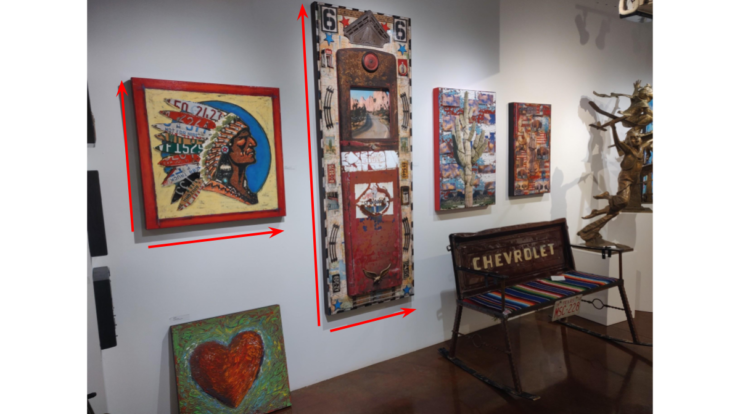
If you’ve been around here for a while, you know I highly recommend pricing based on size, generally square inches. But what if you do work in both large and small sizes? How do you make sure your large work isn’t priced too high and your smaller work isn’t priced too low? I answer this and other price-related questions in the following email exchange:
Hi Jason,
I bought and read your informative book. My question is why do artists have to price by square inch? I have an elaborate system that accounts for the fact that small paintings take almost as much time as larger ones. I am changing my prices for my website (per square inch) and find that the small paintings are hardly worth doing (though I enjoy painting them). Since I am in several galleries, I will need to inform them of the new Lower prices for the small pieces. The medium sized and large pieces are priced correctly.
Thank you,
Elizabeth
My response:
Elizabeth,
Thanks for reading the book and for the question. What you are describing is correct, and many of the artists I work with will have a graduated pricing schedule where the smallest work is priced at a higher per square inch price than large pieces.
Tell me about the formula you were using previously – perhaps it is consistent enough that it can make sense for your work.
Jason
Her response:
Hi Jason,
I was glad to hear that some of your artists use a graduated pricing system. I am back to that system myself as I am a slow painter. (My system starts with a 10″X12″ painting at $7.9 per square inch and goes to a 48″X60″ painting at $3.4 per square inch. This is $950 for the smaller painting and $9500 for the largest. I can send you details if this is something that you can use.).
On a related subject, you say to price high. This is probably my 4th recession and I have never lowered my prices until now. This is the first time that 2 of my 4 galleries have asked all their artists to lower prices as they say that this helps them sell.
Galleries are now making artists pay for frames and then taking half of this for the gallery. In effect, it is now a 60/40 split with the artist getting the 40%. And I was with a gallery that added the shipping price to the painting price and took that for themselves. To show you how long I have been with galleries, I used to get 60% and my frame cost back so the new business model is getting hard to swallow.
Your book mentions how you rate the importance of biographical statements, portfolios, etc. I, and probably many artists use the website as my portfolio as it includes the elements you mentioned. In my experience, most gallery owners have not cared much about a biographical statement. In fact, I made a little notebook with reviews and newspaper clippings of photographs about shows, and past series. I thought that if I were a gallery owner, I would at least read this once to acquaint myself with the history of the article. Only one gallery owner read this, and told me that the most interesting thing that he told collectors was that I used to do sculpture- which explained my desire to paint sculptural flowers, etc. No one else was the least bit interested. You can see that your book has stirred up some comments from me. I hope that you have the time to write back as I appreciate that you are a person with experience in both worlds.
Thank you so much,
Elizabeth
My Response:
Thanks Elizabeth,
And I think the formula you are using sounds very reasonable.
While I know these are difficult times and that many artists have lowered prices, I have seen only limited response to price reductions. While I don’t discourage it if the artist feels it might help, I find that it usually doesn’t. Most buyers aren’t hemming and hawing over a couple of hundred dollars, the argument they are having with themselves is whether they can buy art at all. Hopefully as the economy improves we’ll start getting more to answer “yes.”
Just as an aside, my two best selling artists continue to be my most expensive artists.
I am surprised also that your galleries aren’t putting more effort into getting to know their artists. It doesn’t always close the sale for me to be able to create interest and give information about the artist, but it often helps in the process. Consider taking the gallery owners or staff to lunch and telling them about yourself so they can at least have that basis for sharing information about you.
Keep in touch.
Jason
Your Thoughts on Pricing
Do you use a variation on square inch pricing or some other method? Have you ever lowered your prices? What was the result?
Cover image features art by Xanadu artist Dave Newman
